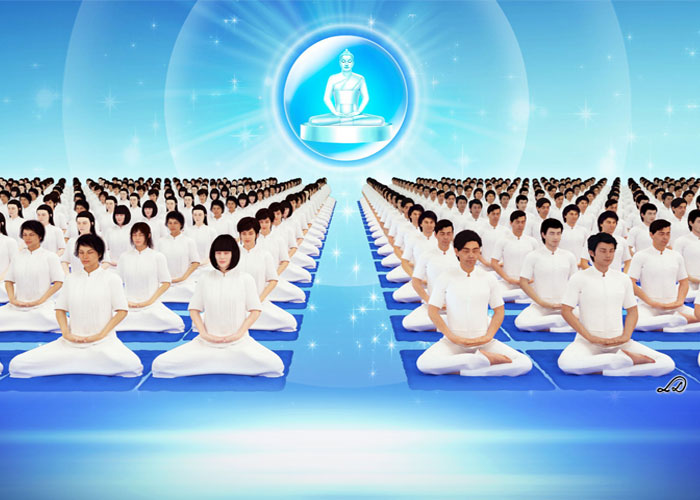
To perfect the skill and experience of his most accomplished meditators Luangpu felt the need to create a special environment and training ground for these meditators. This led to the creation of the so-called 'meditation workshop' in 1935.
The first meditation workshop was built in a special enclosure halfway between the main chapel and the monastery. It was a small, two-story, wooden building. The upper and lower stories were connected by a duct only large enough to allow Luangpu's voice from the upper level to be audible to those below. On the lower floor there were two rows of six platforms with an aisle to walk in between. The floor was bare earth.
By day the nuns would sit in meditation on the platforms. By night, mosquito nets would be draped over them to allow the nuns to continue with their meditation unbitten. The same arrangements were also made on the upper floor, but only Luangpu, monks and novices were allowed there. There were no stairs between the upper and lower floors and the entrances to the two floors were separate so that the male and female meditators had no chance of seeing each other, let alone come into contact.
The second workshop was a single-story square building composed of two twin rooms laid side-by-side and separated by a thin partition. Each room was large enough to hold forty meditators. The room on the right side contained laymen (upasaka) and monks. The room on the left side contained nuns and laywomen (upasika). Luangpu had a place at the front of the building on the right-hand side next to the partition. Luangpu gave instructions for the meditation group through a small opening in the wall, allowing the nuns and upasika to hear his words without being able to see his face. Again, the entrances to the two sides of the room were separate.
Luangpu designated that this hall be used by meditators twenty-four hours a day, seven days a week, non-stop. The abbot selected only the most gifted of the meditators. Their mission was to carry out the investigation of the spiritual world that lies beyond the path to Dhammakaya. The workshop meditators gave up everything, even their own free time. They had almost no time to sleep.
During the War, Luangpu divided his gifted meditators into two shifts. They would take alternate turns sitting for twelve hours of meditation each day, six hours at a time, from midnight to 6.00 a.m., 6.00 a.m. to noon, noon to 6.00 p.m. and 6.00 p.m. to midnight. After the War, Luangpu began to use three teams in six shifts, each one in four hours duration. Each shift had its own highly accomplished leader chosen by Luangpu. When changing shifts, the incoming one would arrive a half hour early to "warm up" their minds and benefit from the spiritual energy generated by the outgoing shift. The perpetual meditation schedule was unprecedented in that it allowed the wisdom of Dhammakaya to be verified again and again.
In the meditation workshop, the Dhammakaya Knowledge was the main focus. This meant an understanding of the super knowledge known to Lord Buddha, i.e., the Threefold Know! edge, Eightfold Supra-normal Knowledge and the Sixfold Superknowledge. Once adept in these forms of knowledge they would apply that knowledge to overcome the dark forces that control the fate of all beings and free them from Samsara, the cycle of rebirth.